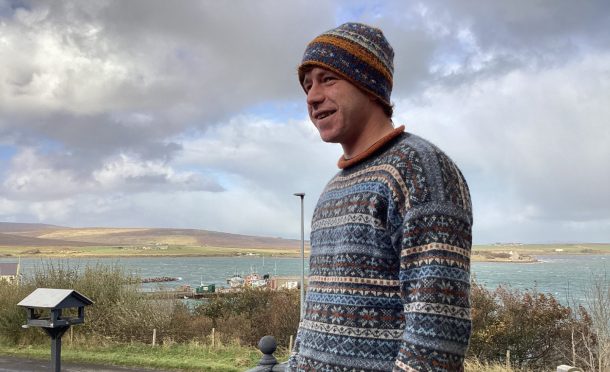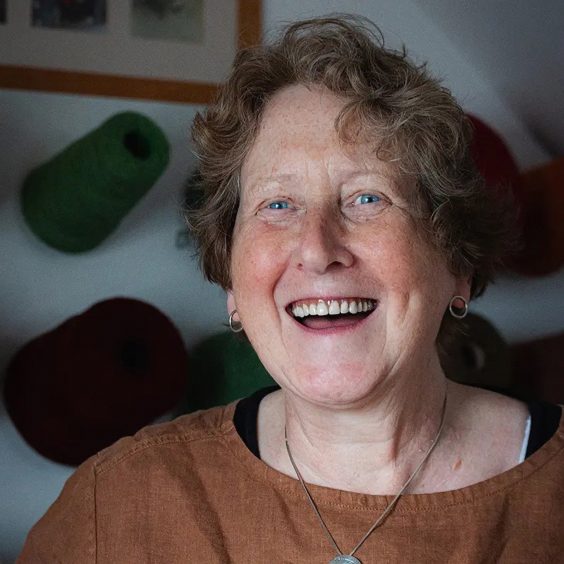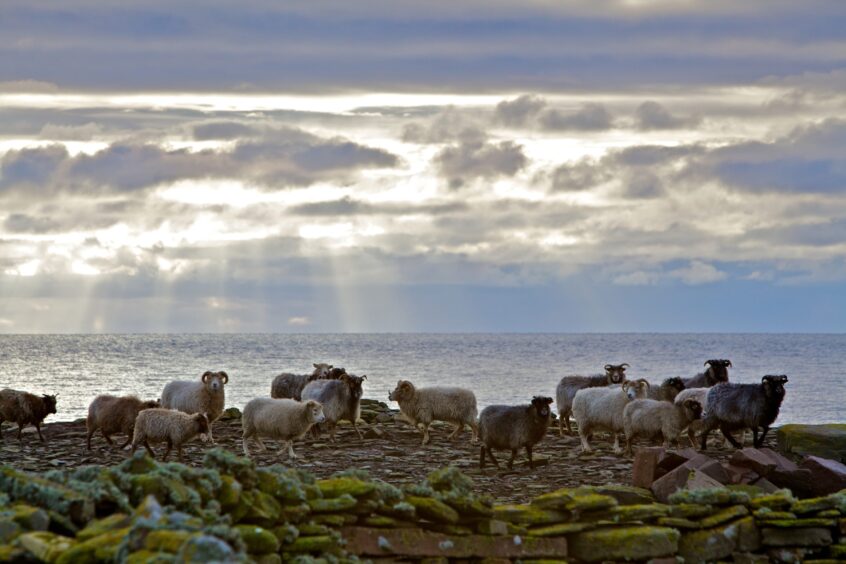
It was a tradition passed down through the generations on the Orkney islands. Young women learned how to work Fair Isle wool to craft clothing.
Intricate designs of the Fair Isle pattern were handed on in notes that are still carefully kept to this day. Those skills have led to one gran on Hoy becoming a global success.
And all after a fashion designer spotted her ferryman son wearing one of her creations.
Maureen White, from Hoy, was stunned to be offered the chance to knit a limited-edition range that sold out within weeks. The new adventure started by chance – as her son Ruiradh was manning the ferry to the island when a film crew for Johnstons of Elgin was scouting locations for a fashion shoot.
They were so taken with his jumper that they took pictures and made contact with Maureen.
The iconic pattern, which was inspired by designs brought by Viking invaders in the 8th Century and then influenced by shipwrecked sailors from the Spanish Armada in the 16th Century, is now internationally recognised as a fashion must-have.
She said: “My son Ruaridh, was out and about wearing a jumper I had knitted when the Johnstons of Elgin film crew saw him operating the ferry to Hoy. They were so impressed with the jumper that they took some pictures, and he explained it had been knitted by me. He passed on my number, and they called to discuss styles, three of which were my favourites, and they asked if I could knit in cashmere instead of the usual thicker yarn used here.
“The next thing I knew was the cashmere fine yarns arriving in the post to practise on. It was a challenge at first, but I soon loved working with it.”
Fair Isle resurgence
Fair Isle is never far from fashion writers’ sketchbooks and with the current resurgence has sparked global sales.
For her Johnstons limited collection she knitted jumpers in cashmere, lambswool and Shetland lambswool along with headbands and hats. The sell-out collection was snapped up by customers in Germany, The Netherlands, France and the USA as well as the UK.
Her work used the changing colours of the seasons and the surrounding terrain on one of the UK’s most northerly islands.
The greys, blues, heathers and browns of the northern windswept landscape are all revealed in her work. The brooding haar, a mist which sweeps in from the sea at the meeting of the Atlantic ocean and North Sea, provides and endless palate of colour.
Maureen said: “I look at the colours around here, changing through the seasons. Sometimes I will take a picture and use that as a guide to inspire the next garment. Creating new jumpers takes a lot of patience because you have to get the colours and patterns to balance.
“It’s just a case of working at the knitting to get the final garment you have in your head.”
Maureen learned the skills from her grandmother and believes every effort should be made to keep the traditions alive. She said: “I have been knitting for as long as I can remember and it was my granny who first taught me. She was always knitting and both she and my mother made some wonderful handcrafts but Fair Isle was always the mainstay of their work.
“When we stayed over with her that’s when the real learning began with bits of wool to knit up little doll’s clothes and other playthings.
“I never dreamt that those skills would end up creating clothes which would be loved by to Fair Isle fans across the world.
“At school we used to knit little coat hanger covers and teddy bears.”
And she added: “It would be great to see it as part of the school curriculum.”
The pattern
Experts believe the design of Fair Isle patterns is maths-based because it is all about counting rows, creating new geometric shapes by increasing and decreasing and calculating gauge and tension to ensure proper sizing.
Symmetry and pattern repeats also have their foundations in maths.
Maureen has a creative space in an upstairs room of her island home where she can spend hours creating and trialling new Fair Isle styles. “It’s a little haven, so to speak,” she said. She is also delighted that her knitting adventure has benefited the community.
Profits from the garments made with Johnstons brought in a tidy donation for the local lifeboat.
“A total of £2,400 was donated to the Longhope Lifeboat Station which has been saving lives for more than two centuries,” she added.
The Longhope Lifeboat Station rescues ships and crew in trouble in the UK’s most treacherous waters where the Atlantic and North Sea clash.
There is a certain symmetry to that as it was the shipwreck of the Spanish Armada ship the El Gran Grifón in 1588 which is believed to have played a part in the creation of the Fair Isle pattern.
Sailors who scrambled ashore on the Fair Isles 200 miles north brought with them colours and designs to influence those brought by the islands’ Norse Viking invaders some 500 years earlier.
The El Gran Grifón was the flagship of the Spanish Armada’s supply squadron and most of the Spanish sailors left first for Orkney before heading to mainland Scotland.

Enjoy the convenience of having The Sunday Post delivered as a digital ePaper straight to your smartphone, tablet or computer.
Subscribe for only £5.49 a month and enjoy all the benefits of the printed paper as a digital replica.
Subscribe
 © Colin Keldie
© Colin Keldie